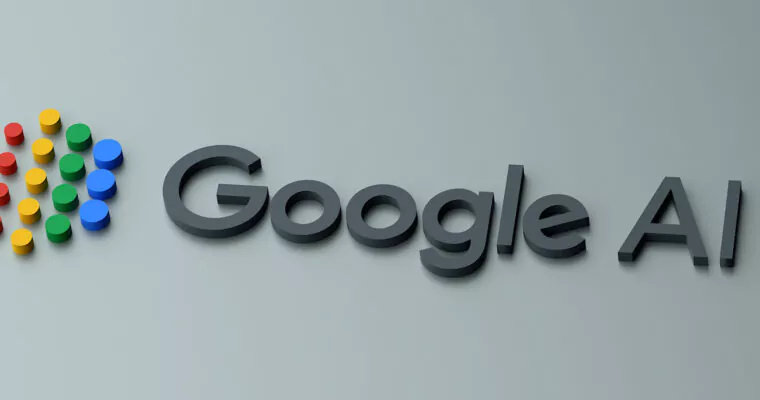Exploring the New Google Features of 2023: Enhancing Your Digital Experience
Contextual Conversations: The Future of Natural Language Processing

Exploring the New Google Features of 2023: Enhancing Your Digital Experience
Introduction:
As the digital landscape evolves, so does Google, continuously innovating to provide users with a seamless and efficient online experience. In this blog post, we’ll take a closer look at the exciting new Google features and updates introduced in 2023. Discover how these enhancements can transform your online interactions, from search to productivity and beyond.
Section 1: Google Search Revolutionized
1.1 Enhanced Search Capabilities:
Google has further improved its search engine with advanced natural language processing (NLP) algorithms. This means more accurate and context-aware search results, making finding information even more efficient.
1.2 Visual Search Integration:
Google now offers an integrated visual search feature. Simply upload an image or take a photo to initiate a search, allowing users to explore similar products, locations, or information visually.
Section 2: Personalized Google Assistant
2.1 Contextual Conversations:
The Google Assistant has become smarter and more context-aware. It can now engage in more natural and context-driven conversations, making it easier to get tasks done via voice commands.
2.2 Customized Responses:
Users can now personalize the responses and interactions with their Google Assistant. Whether you prefer a more formal or casual tone, the Assistant can adapt to your preferences.
Section 3: Google Workspace Updates
3.1 Collaboration Enhancements:
Google Workspace has introduced new collaboration features that streamline teamwork. Real-time co-editing, improved integration with Google Meet, and enhanced project management tools are just a few examples.
3.2 Security and Privacy:
Google is committed to strengthening the security and privacy of its users. New features in Workspace include advanced security measures and data protection tools, ensuring your information is safe.
Section 4: Google Maps Innovations
4.1 Augmented Reality (AR) Navigation:
Google Maps now offers AR-based navigation, which superimposes digital directions onto the real world through your smartphone’s camera. This feature provides more precise guidance in unfamiliar places.
4.2 Eco-Friendly Routing:
Google Maps has integrated eco-friendly route suggestions, allowing users to choose routes that minimize their carbon footprint, contributing to sustainability efforts.
Section 5: Google Lens Advancements
5.1 Enhanced Visual Search:
Google Lens has been upgraded to offer more precise visual searches. Users can scan and identify objects, text, and landmarks with improved accuracy.
5.2 Language Translation:
Google Lens now supports real-time language translation via your smartphone’s camera, making it easier to navigate and communicate in foreign languages.
Section 6:
The new Google features of 2023 represent a significant leap in improving the way we search, work, and navigate the digital world. Whether it’s the enhanced search capabilities, personalized interactions with the Google Assistant, or the innovative updates to Google Workspace, these advancements are designed to enhance our digital experiences. As Google continues to evolve and innovate, users can look forward to a future where accessing information, staying productive, and exploring the world become even more seamless and efficient.
Enhanced Search Capabilities: Navigating the Web with Precision
The digital era is defined by the quest for information, and search engines are our trusted companions on this journey. In this blog post, we delve into the world of enhanced search capabilities, exploring the latest advancements that have revolutionized the way we find, access, and interact with information online.
Section 1: The Evolution of Search Engines
1.1 A Glimpse into the Past:
Search engines have come a long way since their inception. Early search engines relied on keyword matching, often returning results that were less relevant to users’ queries.
1.2 The Age of Enhanced Search:
Today, enhanced search capabilities have transformed search engines into sophisticated tools that understand context, intent, and natural language, providing users with more accurate and personalized results.
Section 2: Natural Language Processing (NLP)
2.1 NLP Revolution:
Enhanced search capabilities are fueled by Natural Language Processing (NLP) algorithms, which enable search engines to understand the nuances of human language.
2.2 Context-Aware Searches:
NLP algorithms allow search engines to decipher context and intent behind queries. Users can now input complex questions and receive contextually relevant answers.
Section 3: The Power of Semantic Search
3.1 Semantic Search Defined:
Enhanced search capabilities incorporate semantic search, which seeks to understand the meaning and relationships between words, phrases, and concepts in queries and web content.
3.2 Precise and Relevant Results:
Semantic search ensures that search engines provide results that align with the user’s intent, even if the query doesn’t match keywords exactly.
Section 4: Visual Search Integration
4.1 Beyond Text-Based Queries:
Enhanced search capabilities have expanded beyond text-based searches. Visual search allows users to input images or take photos for a search query.
4.2 Exploring Visual Content:
Visual search enables users to explore products, locations, and information visually, making it a valuable tool for e-commerce, travel, and more.
Section 5: The Rise of Voice Search
5.1 The Emergence of Voice Assistants:
Voice search has become increasingly prevalent with the rise of voice-activated assistants like Siri, Google Assistant, and Alexa.
5.2 Conversational Queries:
Enhanced search capabilities have enabled voice search to understand conversational queries and provide spoken responses, enhancing the user experience.
Section 6: Personalization and User Experience
6.1 Tailored Results:
Enhanced search capabilities allow search engines to personalize results based on the user’s search history, location, and preferences.
6.2 Enhanced User Experience:
Personalization enhances the user experience, making searches more efficient and relevant.
Section 7:
Enhanced search capabilities have transformed the digital landscape, making it easier than ever to access and interact with information. With the power of NLP, semantic search, visual search, and voice search, users can expect more precise, context-aware, and personalized search experiences. As search engines continue to evolve, our ability to explore the vast digital realm will only become more seamless and efficient. Embrace the future of enhanced search capabilities, where finding the answers you seek is a truly intuitive experience.
Visual Search Integration: Navigating the Web with Images
The internet is a vast visual landscape, and our ability to search for information has evolved to keep pace. In this blog post, we’ll delve into the world of visual search integration, exploring how this technology has transformed the way we interact with online content, products, and information through images.
Section 1: The Evolution of Search
1.1 Beyond Text-Based Queries:
While text-based searches have been the norm for decades, the internet’s visual nature has spurred the development of visual search technologies.
1.2 The Rise of Visual Content:
The proliferation of images and visual content on the web, from product images to user-generated photos, has created a demand for more intuitive search methods.
Section 2: Understanding Visual Search
2.1 What Is Visual Search?
Visual search is a technology that allows users to search the internet using images rather than text. It leverages computer vision and machine learning algorithms to recognize objects, scenes, and patterns within images.
2.2 How Visual Search Works:
Visual search systems analyze the content, colors, shapes, and other visual attributes of an image to generate relevant search results.
Section 3: Use Cases and Applications
3.1 E-Commerce and Retail:
Visual search integration has revolutionized online shopping. Users can now snap a photo of a product they like or a fashion item on the street and find similar products for purchase.
3.2 Travel and Exploration:
Visual search is valuable for travelers. Point your camera at a landmark, and it can provide historical information and related points of interest.
3.3 Art and Culture:
Art enthusiasts can use visual search to identify paintings, sculptures, and artistic styles simply by taking a picture.
Section 4: Visual Search Engines
4.1 Google Lens:
Google Lens is one of the most popular visual search tools, enabling users to explore the world around them, extract text from images, and discover more about objects.
4.2 Pinterest Lens:
Pinterest Lens allows users to search for ideas by snapping a photo. It’s particularly valuable for home décor, fashion, and DIY projects.
Section 5: Benefits of Visual Search Integration
5.1 Efficiency and Convenience:
Visual search simplifies the process of finding information, products, or places by eliminating the need for descriptive text queries.
5.2 Enhanced User Experience:
It provides an engaging and interactive user experience, making search more accessible and enjoyable.
5.3 Improved Accessibility:
Visual search is beneficial for users with limited typing or language skills, as well as those with disabilities.
Section 6: Future Trends and Innovations
6.1 Augmented Reality (AR):
Visual search is expected to merge with AR technology, allowing users to interact with their surroundings in real-time.
6.2 Enhanced Accuracy:
Advancements in computer vision and AI will lead to even more accurate visual search results, making it an indispensable tool for various industries.
Section 7:
Visual search integration has opened up a world of possibilities, allowing us to explore the web and our physical surroundings in new and exciting ways. As technology continues to advance, we can anticipate even more innovations that will make visual search an integral part of our daily online experiences. Embrace the power of visual search, where a picture truly is worth a thousand words, and discover the future of search on the web.
Contextual Conversations: The Future of Natural Language Processing
In the ever-evolving landscape of artificial intelligence and communication technology, contextual conversations represent a groundbreaking development. In this blog post, we’ll explore the fascinating world of contextual conversations, diving into what they are, how they work, and the profound impact they have on our interactions with AI-powered chatbots, virtual assistants, and more.
Section 1: Understanding Contextual Conversations
1.1 The Power of Context:
Contextual conversations refer to AI-driven dialogues that rely on the understanding of context to provide more relevant and coherent responses. These systems can remember previous parts of a conversation, making interactions feel more natural.
1.2 Natural Language Processing (NLP):
At the core of contextual conversations is Natural Language Processing (NLP), a subset of AI that focuses on enabling machines to understand, interpret, and generate human language in a meaningful way.
Section 2: The Key Components
2.1 Language Understanding:
To engage in contextual conversations, AI systems must comprehend the meaning and intent behind words, phrases, and sentences. They use NLP algorithms to decipher the nuances of language.
2.2 Memory and Recall:
Contextual conversation systems have memory capabilities, allowing them to remember previous interactions within a conversation. This enables more coherent and relevant responses.
Section 3: The Role of Context
3.1 Dynamic Contextual Understanding:
Contextual conversation systems don’t just rely on a single context; they dynamically interpret context as the conversation unfolds, providing responses that align with the ongoing discussion.
3.2 Real-Life Applications:
Contextual conversations are employed in virtual assistants, customer service chatbots, and even healthcare applications to provide personalized and efficient responses.
Section 4: Benefits and Advantages
4.1 Enhanced User Experience:
Contextual conversations offer users a more human-like and fluid interaction with AI systems, making the experience feel less robotic and more engaging.
4.2 Improved Efficiency:
By understanding context, AI can assist users more effectively, reducing the need for repetitive explanations and speeding up problem-solving processes.
4.3 Personalization:
AI systems can personalize responses based on user history and preferences, making interactions more tailored to individual needs.
Section 5: Challenges and Considerations
5.1 Data Privacy:
As contextual conversations rely on user data, privacy concerns must be addressed to ensure the secure handling of personal information.
5.2 Ethical AI:
Developers must adhere to ethical guidelines to avoid biases and discrimination in AI responses during contextual conversations.
Section 6: Future Outlook
6.1 Continuous Advancements:
The field of contextual conversations is rapidly evolving, with ongoing research and development leading to even more sophisticated AI-powered interactions.
6.2 Integration into Everyday Life:
As contextual conversations become more prevalent, we can expect them to play a central role in our interactions with AI across various domains, from home automation to healthcare.
Section 7:
Contextual conversations represent a significant stride in the quest to create AI systems that can understand, adapt, and respond to human language in a more natural and meaningful way. As technology continues to advance, we can anticipate even more exciting developments in the world of contextual conversations, ushering in a new era of AI-powered interactions that enhance our daily lives and experiences.








Waay cool! Somme extrewmely alid points! I apprdeciate youu writing
this write-up and the rest off tthe sie is very good.
An impressive share! I have just forwarded this onto a co-worker who had been doing a little research on this. And he in fact ordered me dinner simply because I stumbled upon it for him… lol. So let me reword this…. Thanks for the meal!! But yeah, thanks for spending the time to discuss this matter here on your web site.
cialis results